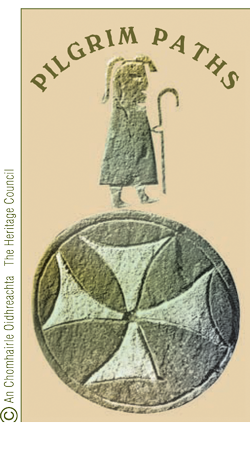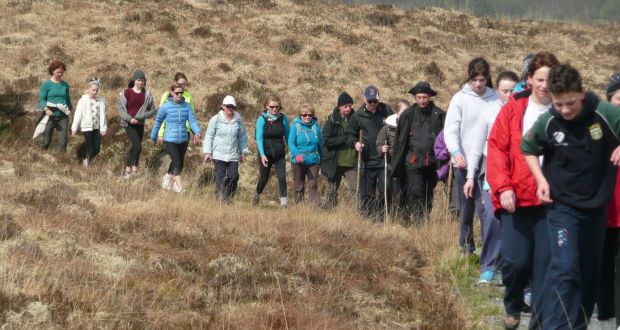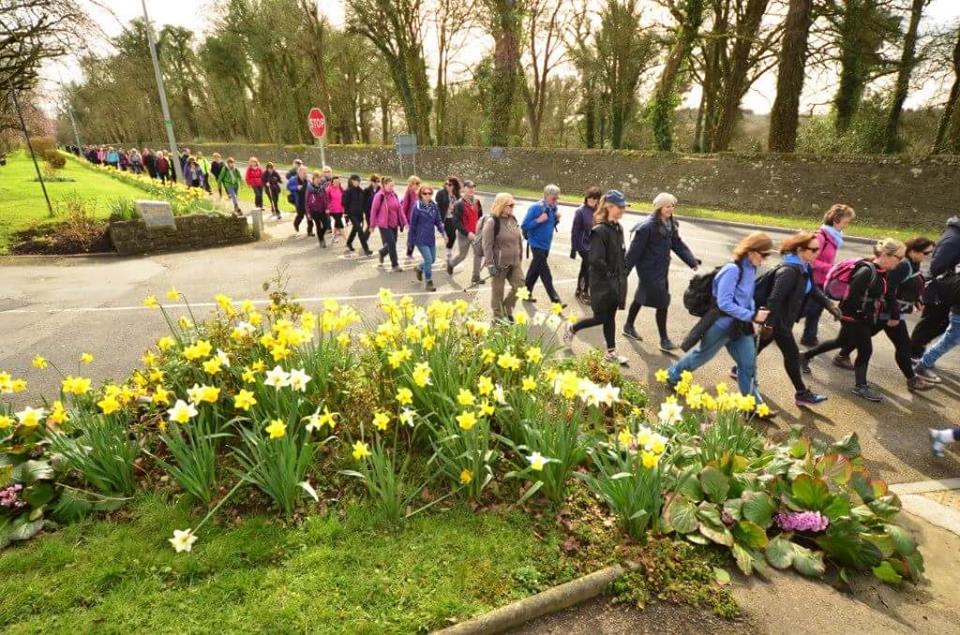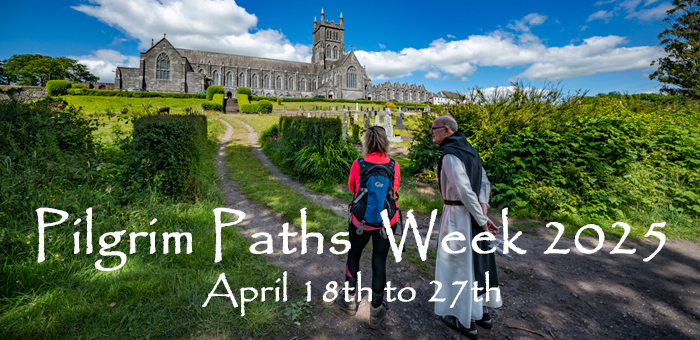After years of underuse, many of Ireland’s pilgrim paths are being reopened. In our secular western world, why do people still embark on such journeys?
By John G. O’Dwyer
After generations of slumber, many of the pilgrim paths of Ireland are reawakening. Some of Europe’s oldest penitential walkways – most reaching back to pre-Christian times and, therefore, long predating the relatively youthful Camino de Santiago, in Spain – are again echoing to pilgrim footfall.
The first stirring in Ireland’s modern pilgrim era came when the Tochar Phadraig was reopened in 1987. This prehistoric chariot road from the royal palace at Rahcruchan to Croagh Patrick was Christianised as a penitential path around the time of St Patrick and then became a popular penitential walkway.
Frank Fahey, curate at Ballintubber Abbey, in Co Mayo, and a driving force behind the reawakening of the Tochar, has seen a big increase in the numbers walking the route. The abbey keeps a record of Tochar pilgrims, and this year was the first time that numbers exceeded 1,000. “In the beginning we just had local people,” says Fr Fahey, “but now, with the great expansion of pilgrim walking, the Tochar has become much more popular. Most days this summer we had groups or individuals setting out from the abbey to walk to Croagh Patrick.
“The majority are Irish, but we are also seeing more Europeans and Americans as the word gets out that completing this prehistoric route is a truly worthwhile experience. For those attempting it in a day, it is a tough 30km, but people are also completing it in a more manageable two days, with some local B&Bs dropping walkers out to the start and collecting them in the evening.”
But in a secular western world, what is the motivation to embark on a pilgrim journey? “People are taking up the pilgrim challenge in the 21st century for two reasons,” Fr Fahey says. “First is the modern trend towards incorporating walking the outdoors as part of a healthy lifestyle. But, at a more profound level, people are searching for a deeper meaning that the material world is not giving them. They are finding meaning, instead, within the simple but fulfilling experience of walking an ancient mystical path. These paths provide the space and the ambience to explore and, perhaps, find that which gives wholeness to their lives.”
Heritage and environment
With heritage and our environment now increasingly important issues, Fr Fahey believes that pilgrimage brings us closer to understanding both, as witnessed by the growing popularity of Irish and European pilgrim paths. He now hopes that an interpretive centre can be established at Ballintubber Abbey based on the theme of European pilgrimage.
“Ireland was an important centre for pilgrimage in the early Christian period. We had people from across Europe coming to centres of learning like Clonmacnoise and Glendalough, while saints such as Columbanus and Gall went in the opposite direction to spread the gospel.
“Pilgrimage is the great historic bond linking us with the Continent. I believe the time has come to tell the story of how early Irish monks transformed Europe when it was devastated by invaders.”
David Ross has recently returned from leading a group of 32 pilgrims on a contemplative journey following St Finbarr’s Way in west Cork. Local tradition holds that the patron saint of Co Cork journeyed back to Gougane Barra along this route after exhorting the people of Drimoleague to return to Christ.
“Since then generations of pilgrims have assembled at the Top of the Rock, above Drimoleague, on the feast day of St Finbarr and walked the 37km to Gougane Barra,” says Ross, spokesman for the St Finbarr’s Pilgrim Path Committee. “In recent years, however, individuals and groups have begun walking the route throughout the year, and 2015 has been the busiest so far.”
But, with so many outdoor experiences now available, what is the special allure of this route? “One attraction,” says Ross “is that it is a two-day walk, allowing plenty of time for reflection and contemplation while, at the same time, it is possible to complete it in a weekend.
“And while the origins of the path are routed in ideas of early Christian spirituality, people of all religious backgrounds and none are drawn here by the timelessness and serenity of the journey. This has brought considerable tourism interest into the four local communities along the pilgrim path.”
Waterford’s patron saint also seems set to claim his inheritance. Regarded by many historians as predating St Patrick as an Irish missionary, St Declan of Ardmore is, nonetheless, little known outside his native county. Similarly, the ancient path across the Knockmealdown mountains that Declan walked on his journeys from Ardmore to Cashel was almost forgotten.
Now the efforts of a local man, Kevin O’Donnell, to restore the route, which incorporates the historic Rian Bó Phadraig and a necklace of other historic sites, seems about to pay off. Plans are afoot to map and waymark the entire 94km path, and a steering committee representing interested community groups, and supported by the local authorities and Leader companies in Tipperary and Waterford, has been put in place to manage the project.
Pilgrim passport
“This pilgrim path has the potential to be a huge success. We have already organised two walks on the route, to celebrate National Pilgrim Paths Day, and on each occasion we attracted over 200 participants. The length of the route is a major attraction, since its distance is comparable to the final stage of the Spanish Camino,” O’Donnell says.
“Next year we hope to have it marked and ready for use by independent walkers, who will be given a commemorative pilgrim passport for stamping en route. Meanwhile, we are planning to organise, with the support of local hillwalking clubs, a fully guided pilgrim walk from Ardmore to Cashel as part of the celebrations for the new National Pilgrim Paths Week in 2016.”
See this article here in the Irish Times.




